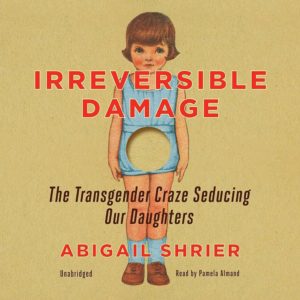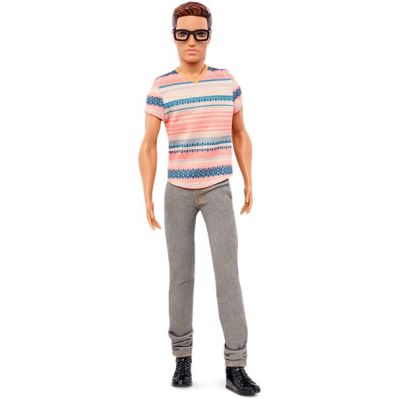Welcome to 2024! I’ve been storing up a lot of Palestine links, but let’s start the year off with something enjoyable. Stay tuned for cancellable political takes in a future post.
The Winter 2023 issue of Orion, the environmentalist literary journal, profiled illustrator John Megahan’s contributions to biologist Bruce Bagemihl’s groundbreaking study of same-sex relationships in the animal kingdom, Biological Exuberance: Animal Homosexuality and Natural Diversity (St. Martin’s Press, 2000). Journalist Lulu Miller was both charmed by the sensitive drawings and angered that these many examples had never before been compiled or discussed in mainstream biology teaching.
Thumbing through the book’s pages, it’s hard not to giggle. This is the Noah’s ark you never heard about. There are male giraffes necking (literally, that’s what scientists call the courtship behavior); dolphins engaging in blowhole sex; and rams and grizzlies and hedgehogs mounting one another in such intricate detail you can almost feel their fur or fangs or spines.
But awe creeps in too. Somewhere around page 453 maybe, with the kangaroos, or page 476 with the bats, or nearing page 700 after the umpteenth species of warbler. How were we not told?
The deeper I’ve fallen down this rainbow-colored rabbit hole, the more I’ve come to understand that my shock at the breadth of queerness in nature is a symptom of a horrible miseducation, of centuries of science bullying the abundance of queerness off the record, of an internalized homophobia that sometimes still whispers in my ear that I, a queer woman, do not belong on the tree of life. Bruce Bagemihl’s book with Megahan’s illustrations accomplished a kind of feat of alchemy. They took two millennia worth of outliers, scooped them all together, and in so doing revealed that which had been labeled as “unnatural” to be natural. This book helped to shift a scientific paradigm; its width is humbling, its bibliography, muscular. It taught me how the seemingly humble act of compilation can be a kind of activism.
I’m not alone in seeing the book this way. When Biological Exuberance was published in 1999, reviewers called it “revolutionary,” “monumental,” and “a landmark in the literature of science.” It was listed as a Best Book of 1999 by Publishers Weekly and the New York Public Library. It would even go on to be cited in a brief for the Supreme Court case of Lawrence v. Texas (2003) as a scientifically rigorous refutation to the belief that homosexuality was a “crime against nature.”

Every generation thinks they’re ahead of their sexually stodgy ancestors. Well, Harry Roy and His Orchestra were singing about “My Girl’s Pussy” in 1931. Yes, it’s exactly what you think.

If pussies are too tame for you, consider xenogenders. In their June 2023 post “What it Means to be Slime,” Substack author NubileConcubine reflects on identification with imaginary and nonhuman creatures, and how this can express the mysterious and idiosyncratic aspects of gendered embodiment. They discuss the debate within the queer community about whether custom genders are “cringy, immature, and unreal.” This plays into the fraught relationship among transness, neurodivergence, and disability, a topic discussed at length in my current trans book group read, Cameron Awkward-Rich’s The Terrible We: Thinking with Trans Maladjustment (Duke University Press, 2022). Hat tip to poet [sarah] Cavar for the link.
This headline from The Guardian (UK) can’t be beat: “Uproar as after-school Satan club forms at Tennessee elementary school”. Those wags at The Satanic Temple are at it again, spotlighting violations of church-state separation by demanding equal access for non-Christian religions. Or, as journalist Erum Salam’s sub-header (rather disappointingly) clarifies, “Satanic clubs, whose members do not worship the devil, usually formed in response to presence of religious groups in schools.”
The After School Satan Club (ASSC) wants to establish a branch in Chimneyrock elementary school in the Memphis-Shelby county schools (MSCS) district.
The ASSC is a federally recognized non-profit organization and national after-school program with local chapters across the US. The club is associated with the Satanic Temple, though it claims it is secular and “promotes self-directed education by supporting the intellectual and creative interests of students”.
The Satanic Temple makes it clear its members do not actually worship the devil or believe in the existence of Satan or the supernatural. Instead Satan is used as a symbol of free will, humanism and anti-authoritarianism.
Satanic after-school clubs are usually established in a school district in response to the presence of religious clubs, such as the Christian evangelical Bible group the Good News Club. The temple says it “does not believe in introducing religion into public schools and will only open a club if other religious groups are operating on campus”.
I’m all for anti-authoritarianism, etc., but if we don’t get to wear funny costumes and light candles, count me out.

Apropos of nothing, I just really liked this poem by recent Pulitzer Prize winner Diane Seuss on the Green Linden Press website, “Little Fugue with Jean Seberg and Tupperware”. Older woman with zero fucks to give–not exactly bitter but definitely tired of being sweet.
…Love, that little wood tick. That tick-in-the-ass.
Say the word enough times inside your head,
it will fall out of its meaning
like a stillborn, plop, into the toilet.
In the January 2024 issue of the Catholic magazine America, Eve Tushnet profiles Awake, a laypeople’s organization that helps survivors of clergy sexual abuse. This grassroots movement is stepping in where the institutional church has failed.
The word awake signifies a change, a new awareness of one’s surroundings. Sara Larson’s awakening came in 2018, following the Pennsylvania grand jury report on sexual abuse in the Catholic Church and the revelations of then-Cardinal Theodore McCarrick’s long history of abuse. She says the news left her and other Catholics she knew in the Milwaukee area “concerned and hurt and frustrated, and wondering what we could do to help.” In March 2019, a group of people began meeting in Ms. Larson’s living room to discuss ways to respond. They called the group Awake, and it didn’t take them long to settle on an answer.
That August, Awake made its first, formal, public act: an apology in the form of an open letter to survivors of abuse. Ms. Larson says that the group decided to issue the letter because “many apologies that have been given by church leaders feel inadequate.” Awake, she says, “realize[d] that we as members of this church, as the body of Christ, could apologize as well, and make a public commitment to stand in solidarity with survivors and to work for transformation and healing in our church.”
Four years later, Awake has grown into a nonprofit organization, and its response to the abuse crisis has grown, too. The group’s mission is “to awaken our community to the full reality of sexual abuse in the Catholic Church, work for transformation, and foster healing for all who have been wounded.” The group now does advocacy work and offers many programs that address the needs of abuse survivors…
Awake was born out of a conviction that survivors are members of the body of Christ: that Catholic prayer, the sacraments and all that the church can offer still belong to survivors, and that they deserve to experience the church in a way that restores, nourishes and heals. Awake also recognizes that, ultimately, survivors follow many paths of healing and discovery.
Awake welcomes members from a variety of faith backgrounds, and with various relationships to the Catholic Church. Some of Awake’s members have always been practicing Catholics. Others no longer have an interest in Catholic practices. But many have an ambivalent relationship to Catholic prayer, sacraments and worship settings. Awake strives to respect each of these perspectives because, for people against whom Catholic spiritual practices were weaponized for grooming and abuse, it can feel as though only a thin veil separates one’s present safety and healing from the trauma of the past.
Eve’s novel Punishment: A Love Story is a triumph of Wildean wit. Go get it–for the love of God, Montessori!
In the Massachusetts Review, Koa Beck’s essay “Nanny of the State” describes how becoming an authorized foster parent forced her into uneasy complicity with a carceral system.
Parents are presented with a highly individualized plan by the court to help establish a “safe” home to which their children can return without state intervention. The tonality of the courts underscores this approach: if they can get and stay sober, if they can establish a clean, secure place to live, if they can maintain a job, if they attend therapy, they can reclaim custody of their children. Everything is on them.
his isolated framework to dissect why parent and child should be separated is further reflected in the infrastructure of the courtroom: parenthood is literally evaluated on a case-by-case basis, like there are no deeply rooted, long-standing factors as to why this has happened. The siloing presents the story as if it’s isolated to this parent and this child. No two cases are identical, but many grow from identical circumstances. Homelessness overlaps with substance abuse in a poverty spiral where little to no access to mental health resources or food security or affordable housing inevitably means ricocheting into addiction or violence or both.
Blame is singular where it should be structural: Why are these parents struggling with basic needs? What about their life and their challenges render them incapable of parenting on a fundamental level? What about their inability to secure mental health services or economic security at critical stages has yielded this reality?








